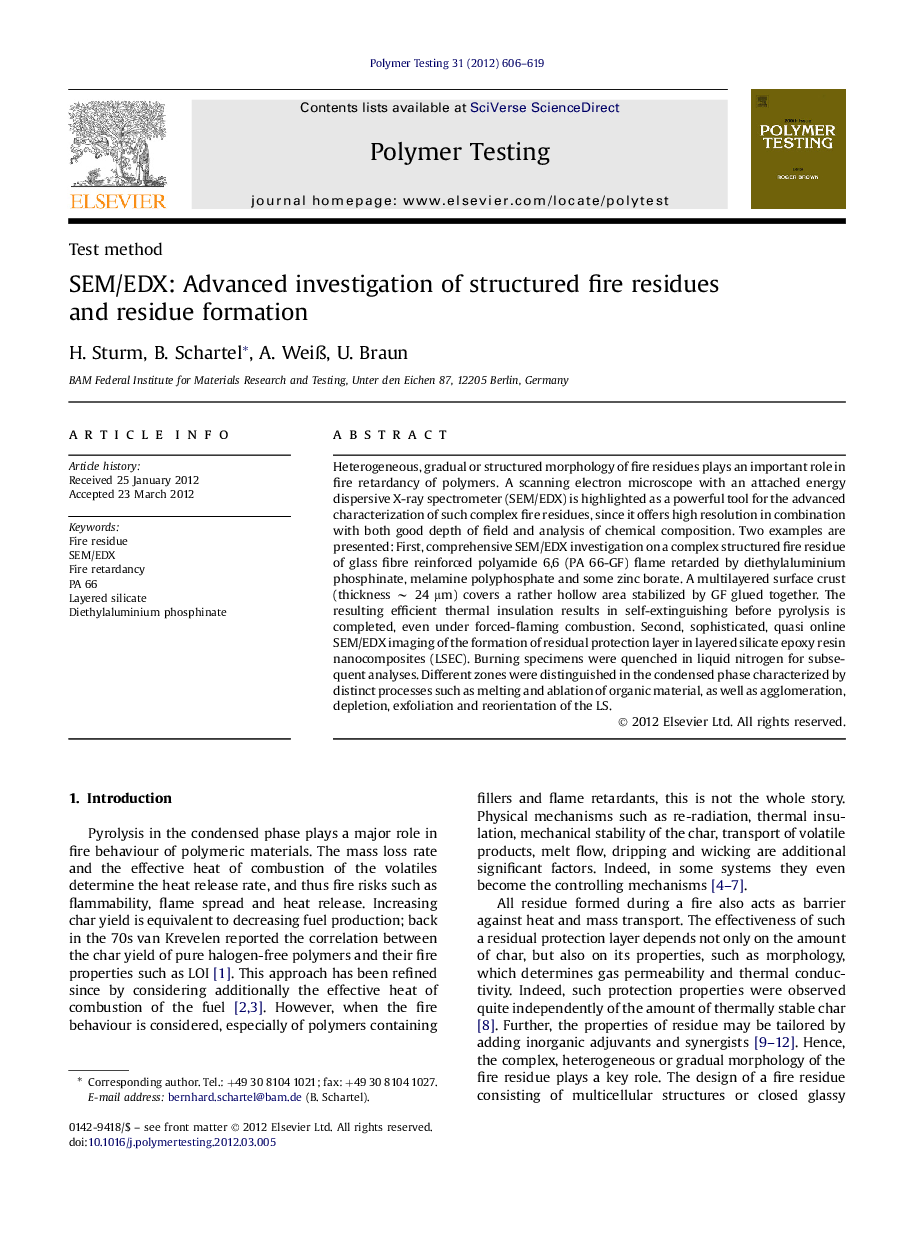| Article ID | Journal | Published Year | Pages | File Type |
|---|---|---|---|---|
| 5206760 | Polymer Testing | 2012 | 14 Pages |
Abstract
Heterogeneous, gradual or structured morphology of fire residues plays an important role in fire retardancy of polymers. A scanning electron microscope with an attached energy dispersive X-ray spectrometer (SEM/EDX) is highlighted as a powerful tool for the advanced characterization of such complex fire residues, since it offers high resolution in combination with both good depth of field and analysis of chemical composition. Two examples are presented: First, comprehensive SEM/EDX investigation on a complex structured fire residue of glass fibre reinforced polyamide 6,6 (PA 66-GF) flame retarded by diethylaluminium phosphinate, melamine polyphosphate and some zinc borate. A multilayered surface crust (thickness â¼Â 24 μm) covers a rather hollow area stabilized by GF glued together. The resulting efficient thermal insulation results in self-extinguishing before pyrolysis is completed, even under forced-flaming combustion. Second, sophisticated, quasi online SEM/EDX imaging of the formation of residual protection layer in layered silicate epoxy resin nanocomposites (LSEC). Burning specimens were quenched in liquid nitrogen for subsequent analyses. Different zones were distinguished in the condensed phase characterized by distinct processes such as melting and ablation of organic material, as well as agglomeration, depletion, exfoliation and reorientation of the LS.
Related Topics
Physical Sciences and Engineering
Chemistry
Organic Chemistry
Authors
H. Sturm, B. Schartel, A. WeiÃ, U. Braun,
